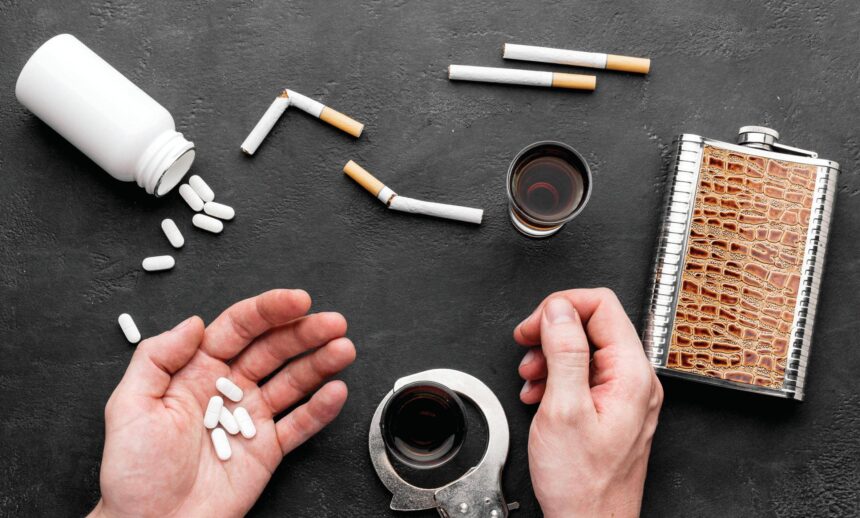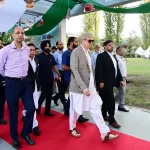SILENT EPIDEMIC
Kashmir, a land known for its breath-taking beauty, rich cultural heritage, and resilient people, is today facing a quiet but catastrophic crisis. Beneath the snow-capped mountains and serene valleys lies a growing darkness—an invisible war claiming the minds and souls of its youth. Drug and alcohol addiction is no longer a shadow on the margins; it is now a central threat to the very future of this paradise.
In every town, every neighbourhood, whispers of this epidemic grow louder. What began as isolated cases has evolved into a full-blown societal crisis. Young boys and girls, many of them teenagers, are falling prey to addiction at an alarming rate. The pain is no longer hidden—it is visible in sunken eyes, vacant classrooms, broken homes, and grieving families.
Addiction rarely makes a grand entrance. It begins in silence. It starts with a single moment of experimentation—perhaps a pill shared among friends, a drink to forget a bad day, or a needle offered in a time of emotional weakness. It grows slowly but steadily, turning bright young minds into haunted souls. And by the time families begin to notice, the person they once knew is slipping away.
Drug abuse is surging through Kashmir like a slow, burning fire. Heroin, cannabis, prescription opioids, and synthetic drugs are now dangerously easy to obtain. But this epidemic is not limited to illegal drugs. Alcohol, too, has quietly embedded itself into the culture of escapism. Once frowned upon, alcohol consumption is now increasingly common among youth seeking relief from anxiety, depression, or sheer hopelessness. While society still frowns on drug use, alcohol often slips by unnoticed—considered “milder,” though its consequences are equally devastating.
The reality is that alcohol ruins as many lives as drugs. It seeps into family gatherings, social circles, and even educational spaces. It leads to violence, dependency, accidents, and long-term health issues. Youth addicted to alcohol often start early—sometimes as early as middle school—and by the time help is sought, much damage has already been done. The accessibility and social tolerance of alcohol make it an especially dangerous weapon in this silent war.
What makes the situation more painful is how ill-equipped society is to respond. Families live in denial, afraid of social shame. Communities keep secrets. Rehabilitation facilities are limited, overburdened, or financially out of reach. There are few structured support systems for mental health, which is often the root cause of substance abuse. Depression, trauma, peer pressure, and unemployment—all feed this fire.
Parents, teachers, and caregivers are caught in a storm they don’t understand. A mother cries herself to sleep watching her once-promising son vanish into addiction. A father silently sells his belongings to afford treatment. Teachers watch students disappear from school rolls. The burden is unbearable, yet largely hidden behind closed doors.
The damage doesn’t stop with individuals. It spills into society—into rising thefts, broken trust, declining productivity, and fractured families. The economic burden is huge, but the emotional toll is even heavier. We are watching a generation lose itself while we stay too afraid, too late, or too unaware to intervene.
And still, there is hope. Hope lies in the courage to speak, to act, to confront. The first step toward change is awareness—free of shame and rich in empathy. We must treat addiction not as a crime, but as a disease. Schools must become spaces of emotional education, where young people learn about resilience, self-worth, and the dangers of escape through substances. Parents must be guided to talk, listen, and observe without fear or blame. Religious leaders, social activists, and media voices must rally together to send a loud and united message: this cannot go on.
The government, too, must rise to the occasion. This crisis deserves the same urgency as any natural disaster or public health emergency. Investment in rehabilitation centers, training for counsellors, and public awareness campaigns must become top priorities. We must build a network of hope—where help is available, recovery is celebrated, and life beyond addiction is made visible and possible.
This is not a fight that can be left to a few. It is a war that demands all of us—families, educators, faith leaders, law enforcement, media, and especially the youth themselves. We cannot afford to lose more time. Every life lost to addiction is a tragedy, not just for one family, but for all of Kashmir.
We owe our youth more than silence. We owe them a future. Let us not wait until the silence becomes unbearable. Let us act now. Let us choose to heal.
“The Chains Of Addiction Are Too Light To Be Felt Until They Are Too Heavy To Be Broken.”
(Author can be reached at: [email protected])








